#the key 1961
Text

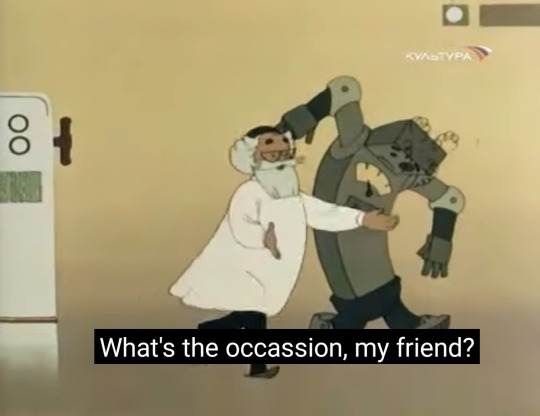
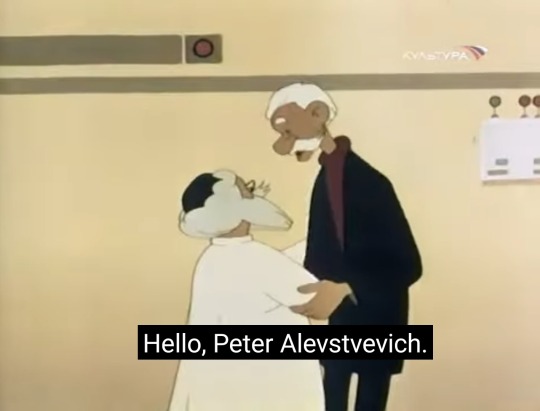
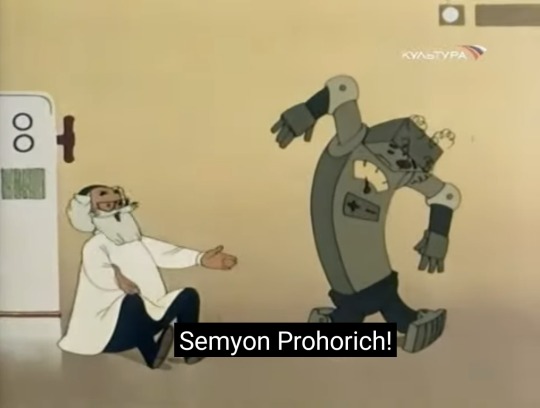

The two old men in this Soviet cartoon from 1961😭🏳️🌈
11 notes
·
View notes
Video
youtube
The Mar Keys - Last Night (Stereo Mix)
0 notes
Text

The Ferrari 250 Testa Rossa, or 250 TR, was a racing sports car built by Ferrari from 1957 to 1961. It was introduced at the end of the 1957 racing season in response to rule changes that enforced a maximum engine displacement of 3 litres for the 24 Hours of Le Mans and World Sports Car Championship races. The 250 TR was closely related to earlier Ferrari sports cars, sharing many key components with other 250 models and the 500 TR.
The 250 TR achieved many racing successes winning 10 World Sports Car
Championship races including the 24 Hours of Le Mans, the 12 Hours of Sebring and the Targa Florio. Ferrari won the World Sports Car Championship constructor's titles in 1958, 1960 and 1961 with the 250 TR.
The cam covers were painted bright red, giving the car its name "Testa Rossa" literally meaning "Red Head". This naming tradition first originated with the 500 TR.
Ferrari also named the 1984-1991
Testarossa road car as a homage to the 500
TR and 250 TR. In contrast to the front-engine V12-powered 250 TR, the 80s Testarossa is a mid-engine design using a flat-12 engine and was designed as a road-going sports car, rather than a racing car.
#ferrari#ferrari 250#testarossa#racecar#supercar#sportscar#hypercar#exotic car#muscle car#muscle cars#musclecar#musclecars#classic#aesthetic#aesthetics#classic car#vintage#vintage car#car#cars#luxury car#aes
448 notes
·
View notes
Text
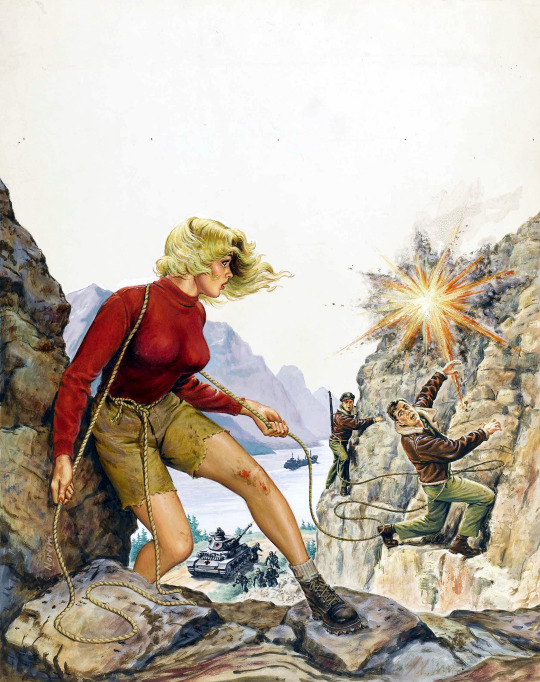
The Gold Blonde: Key to Freedom - Or Hell, by Earl Norem, 1961
105 notes
·
View notes
Text

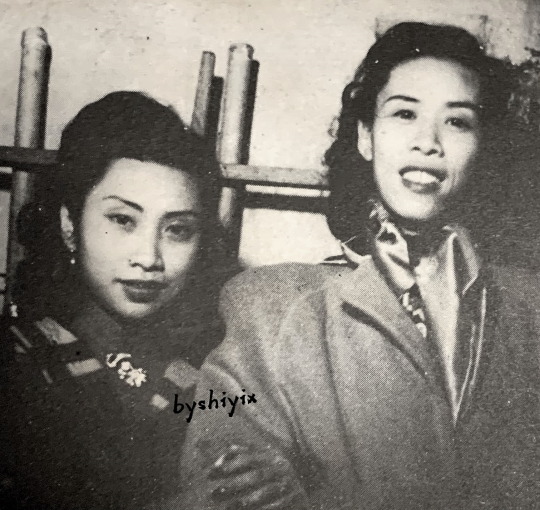
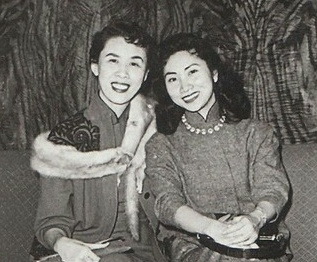
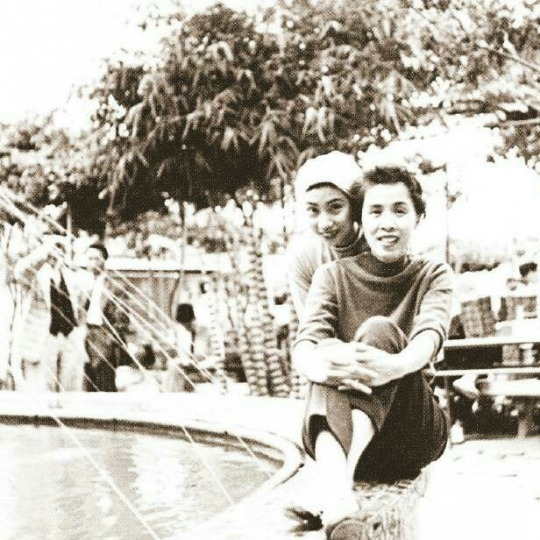

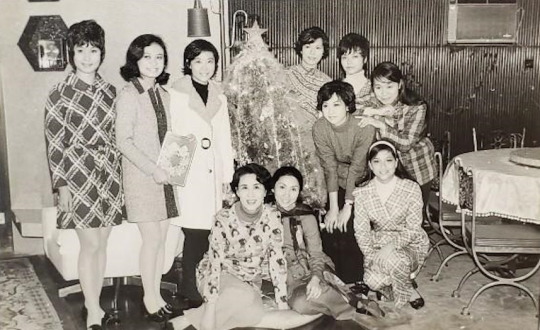
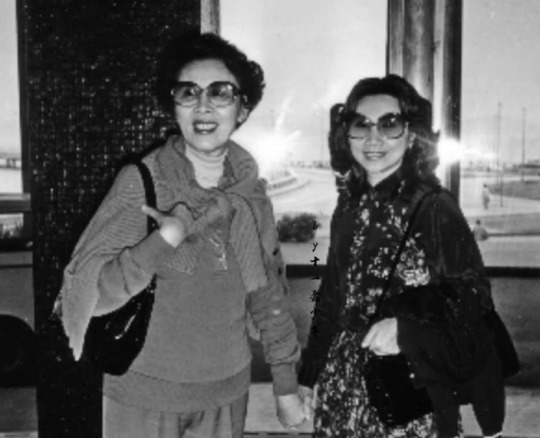

Female Queer Icons of Hong Kong // Yam Kim Fai (任劍輝) and Pak Suet Sin (白雪仙)
Photo 1: Promotional photo for 1955 contemporary movie The Model and the Car (玉女香車) (no video available) (Source: LCSD Museum Collection Search Portal)
Photo 4: Photo from Sin Fung Ming Opera Troupe's 1958 trip
Photo 5: Photo from a 1962 newspaper feature on Yam, Pak, and others at their (?) summer villa in Central, Hong Kong
Photo 6: Christmas celebrations with Yam, Pak, and their protégés of the Chor Fung Ming Troupe
Far and away the most iconic duo in Cantonese opera, Yam Kim Fai (任劍輝) and Pak Suet Sin (白雪仙) – commonly referred to simply as Yam-Pak (任白) – were famed for their partnership both on and off the stage… Click below to learn more!
Edit on 28/07/2023: Updated to link to a photo of the entrance to the Hong Kong Heritage Museum’s Pop Culture 60+ exhibit, and to add information regarding Yam and Pak's marriage status.
Iconic? How?
Yam-Pak are the face of Cantonese opera; you can't talk about the latter without mentioning the former. It's to the point where a gigantic picture of them graces the entrance to the Hong Kong Heritage Museum’s permanent exhibition on Hong Kong pop culture’s evolution across the past 60 years (“Hong Kong Pop 60+”) - they are the first thing you see upon entering!
Best known as the originators - with Yam playing the male leads and Pak the female leads - of five masterpieces of Cantonese opera, namely:
1. Princess Cheung Ping (帝女花)
2. The Legend of the Purple Hairpin (紫釵記)
3. The Dream Tryst in the Peony Pavilion (牡丹亭驚夢)
4. The Reincarnation of Lady Plum Blossom (再世紅梅記)
5. Butterfly and Red Pear Blossom (蝶影紅梨記)
(Note: Princess Cheung Ping, Purple Hairpin, and Butterfly and Red Pear Blossom were made into abridged movie versions, with the Sin Fung Ming troupe members reprising their roles from the theatre productions. Also, the "Fragrant Sacrifice" (香夭) duet from Princess Cheung Ping (movie clip) is one of - if not the most - famous songs in Cantonese opera.)
Yam and Pak were the leading pair and co-founders of the legendary Sin Fung Ming Opera Troupe (仙鳳鳴劇團; 1956-1961), which is widely held to have pushed Cantonese opera forward as an artform due to Pak and scriptwriter Tong Tik Sang’s (唐滌生) emphasis on poetic libretti and adapting source material from Chinese literature and history. (Note: it has been common practice since the 1930's for Cantonese opera troupes to be founded by key actor(s).)
They were also very active in the Hong Kong film industry in the 1950's, being paired in over 40 movies together across roughly 8 years. One of those – the aforementioned Butterfly and Red Pear Blossom (蝶影紅梨記) – is the sole Cantonese opera movie on the Hong Kong Film Archive’s 100-Must See Hong Kong Movies list (IMDB list / archived version of the official PDF). It's a well-deserved inclusion - check out this beautifully-shot dance scene.
Even their post-retirement activities had a significant effect on the industry! In the early 1960’s, they held auditions for prospective students and provided - for free - systematic, hands-on training to those who passed; Yam and Pak even hired other veterans to teach skills they personally were not as familiar with. Prior to this, apprentices were expected to learn primarily from observing their masters, and to pay handsomely for the privilege. Yam-Pak’s methods proved exceedingly effective: the Chor Fung Ming Opera Troupe (雛鳳鳴劇團; 1963-1992) starring their apprentices reigned supreme in the 1970’s-1980’s. Following this success, Cantonese opera institutes - most notably the major 1900s-era guild, the Chinese Artists Association of Hong Kong (八和會館) - started to offer systematic coaching to young hopefuls in the 1980's.
Okay, so why are they queer icons specifically?
The lazy answer is that they're queer icons because nearly all of Yam's roles were male, so Gender is involved by default, and since most hit Cantonese operas of the time were romances, that means you get to see two female actors performing being in love onscreen (and also on stage, but there aren't any video recordings from back then). So far, so Takarazuka Revue.
Female actors playing male roles in Cantonese opera
To give some context, each Cantonese opera performer specialises in one of four major role-types, and Yam was a sung (生) - i.e. an actor specialised in playing standard male roles. Female sung were fairly common in the 1910's-1930's due to women being banned from performing with men during that period, but when the ban lifted in the mid-1930's, many troupes shifted towards cis-casting. Yam was pretty much the only one whose popularity survived the transition. Just take a look at the huge number of Cantonese opera movies produced during the 1950’s-1960’s – you’ll be hard-pressed to find a female sung other than Yam, let alone one with top billing.
Happily, thanks to Yam's immense popularity, her profilic film career (over 300 movies!), and the prominence of Sin Fung Ming works in the Cantonese opera canon, there has been a resurgence in female sung which endures to this day. Two noteworthy examples are Yam's protégé Sabrina Lee/ Loong Kim Sang (龍劍笙) - a star in her own right - and Joyce Koi/ Koi Ming Fai (蓋鳴暉), one of the biggest names still active in the industry.
(Note: perhaps due to cinema being more "realistic" in nature, Yam's early movies often involved her playing female characters cross-dressing as men, including in some Cantonese opera movies. However, she received increasingly more male roles as her fame grew, and from the mid-1950's onwards she was playing male characters onscreen nearly exclusively-- even in non-Cantonese opera movies! See Photo 1 above.)
What sets Yam and Pak apart is that they were particularly known for their chemistry. Long before Sin Fung Ming's formation in 1956, the advertising copy for their first Cantonese opera movie together - Frolicking with a Pretty Maid in the Wineshop (酒樓戲鳳, 1952) - declared "Only this movie has Yam-Pak flirting on the silver screen" (source - 華僑日報 1952/05/23-26). And indeed, they were popular for their flirtatious duets: their Cantonese opera works invariably contained at least one, and such scenes made it into some of non-Cantonese opera (i.e. "contemporary") movies too. In fact, there are not one but two contemporary movies where Yam and Pak's characters are not paired up and yet still sing a duet together in such a way that their significant other(s) become convinced that the two are in romantically interested in each other - see 1952's Lovesick (為情顛倒) and 1956's The Happy Hall (滿堂吉慶) - a weirdly specific situation which doesn't crop up in the other, non-Yam-Pak movies I have seen.
Speaking of contemporary movies, let's talk about a certain plotline that keeps cropping up in works featuring the both of them and where Yam plays a woman! Six of the eleven movies which fit that criteria involve Yam's character cross-dressing as a man (a common characteristic across Yam's handful of female roles), and Pak's character falling for her. Nothing ever comes of it, of course, but, um. It was certainly a trend. Actually, even their very first movie together - 1951's Lucky Strike (福至心靈) - falls into this category.
Such storylines, and the emphasis on their chemistry, are particularly interesting given that both Yam and Pak remained ostensibly unmarried throughout. This was unusual for female performers of their stature, who tended to wed in their twenties, often to fellow-actors or wealthy men (e.g. Hung Sin Nui/紅線女, Fong Yim Fun/芳艷芬, and Tang Pik Wan/鄧碧雲)... In contrast, by the time Yam-Pak retired from the stage in 1961, they were both over 30 years old and without husbands.
Also, did I mention they were popularly believed to be living together? There doesn't seem to be any conclusive evidence either way... although it's a little strange that separate newspaper pictorials depicting "Yam at home" and "Pak at home" seem to be of the same location... however what is conclusive is that they did spent a lot of time together offstage. Pak has talked about how when they had no guests over, Yam would watch TV by herself while Pak was in the living room (source - p93), and protégé Mandy Fung/ Mui Suet Sze (梅雪詩) has said that Pak would sometimes cook for Yam at home (source - 03:53~). They would also celebrate birthdays, New Year's, and Christmas together (see Photo 6 for an example of the latter).
Shortly after Yam's passing in 1989, Pak set up the Yam Kim Fai and Pak Suet Sin Charitable Foundation (任白慈善基金) to support the arts and provide welfare for the elderly. In 1996, Pak made a large donation to Hong Kong University, resulting in one of the buildings being renamed Yam Pak Building (任白樓) in thanks (source).
Thanks for reading! Please feel free to DM me or send an ask if you have any questions, or are just interested in learning more.
If you made it here, have this bonus piece of trivia - Yam and Pak were also well-acquainted with Hong Kong's preeminent queer icon, Leslie Cheung (張國榮), who was a massive fan of theirs. Sadly there don't seem to be any pictures of them before Yam's passing, but here's one of Pak (centre) having afternoon tea with Cheung (left) and his long-term romantic partner Daffy Tong (唐鶴德) (right) at the Cova cafe in the Pacific Place shopping mall.
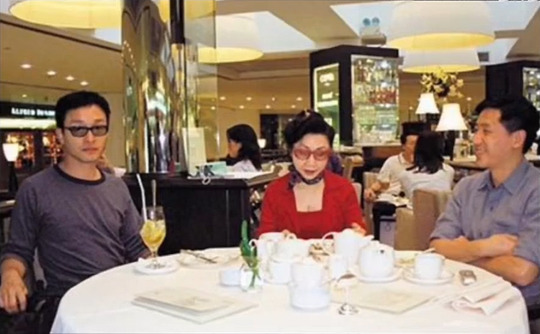
#wlw recommendations#sapphic#lgbtq#asian lgbtq#hong kong#theatre#cantonese opera#chinese opera#yam kim fai#leslie cheung#pak suet sin#yampak#yambak#pak sheut sin#bak sheut sin#hong kong queer icons#not me hastily adding tags because i keep forgetting certain ones
153 notes
·
View notes
Note
HI! hope your day is treating you well, i’ve been interested in doomreed for some time but cape comics are sort of daunting to me just because there’s so much content and i really don’t know where to begin. what do you suggest? thank you!
STRAIGHT OUT THE GATE ill say, read [ "My Dinner With Doom" ] (this is a rly high-qual upload, open it up on desktop!)
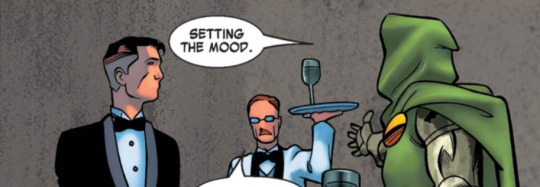
It's a key issue oneshot with a lil bit of backstory retelling, featuring a private dinner that happens in the 00's - a good entrance point if you're curious about doomreed in summarization + generally speaking a Real Good Comic overall.
LONG POST INCOMING THIS IS A LONG POST / click readmore
the fantastic four are one of marvel's darling old founding teams so there is pretty much... endless archival, ongoing, multimedia and games content popping up all the time.
They are also kinda one of the rare teams where the growth of the characters is consistent? The kids are allowed to grow older and events from every major run are carried/referenced by the next author so if you want to do chronological there's a lot of incentive and fun stuff.
If you wanna dip your toes into the F4 as a concept, check out:
*the #1 issue of Fantastic Four By Waid & Wieringo (1997)
*Mythos: Fantastic Four (2007)
[ *The FF (1994) movie that is up for free on youtube!! ]
*Fantastic Four (2022) by Ryan North as the current ongoing!
(Some) Singles centered on Doom/Doomreed:
*Fantastic Four (1961) Annual 2 is Doom's original backstory issue
*Marvel Two-in-One (2017) by Zdarsky issue #11 & Annual #1 are both crazy good but they spoil big events/conclusions from previous runs if u care abt that!!! (My current fav fic came from these issues.)
*Doomgate (novel) by Jeffrey Lang is a good option if you want something that is mostly prose, instead of a comic or movie
NOW BEFORE YOU JUMP AHEAD WITH ANYTHING I *am* following [ this reading guide ] which breaks down specific issues relevant to their relationship as a line through all the different authors over the years.
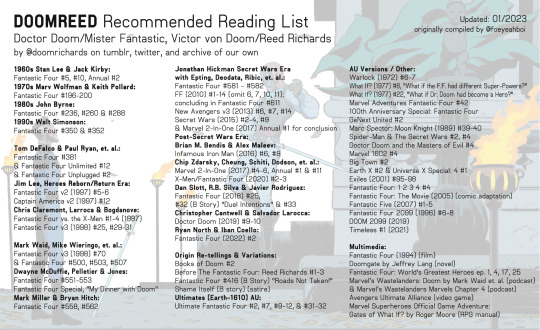
[ There's also this 2021 guide w/ a few other story/AU highlights! The author said u can send the blog questions and theyll answer too ]
The 'Modern era' (late 90s/00s/10s/Now) Starts with Waid and McDuffie's stuff. The latter wrote My Dinner with Doom!
If you're scared by all the names, don't be - when searching for the issues, just pay attention to the year, # number & author/artist creds.
What I'm reading/liveblogging rn is Hickman's Secret wars era, generally regarded as yaoi ketamine; It's a good epic narrative entrance point if you want to jump into it, and it eventually led into this huge marvel event that changed the multiverse and even brought miles morales into the main timeline, so its BIG and it happened in multiple books - the best way to go about it is;
Pre-hickman:
Fantastic Four (1961) #551 #552 #553 ➡️
(these introduce main ideas we will touch again in secret wars)
Fantastic Four (1961) #558 to #562 ➡️
Doom appears in these too, first/last issues more heavily. Stuff here will be ref'd during the next era.
If you're having fun and want to keep reading you can! Just know that the next storyarc has gathered a largely mixed response bc..... its Millar going hammywammy....... not that necessary.......

anyway when you see hickmans name in the cover STOP and
Jump to actual Hickman secret wars era:
Fantastic Four by Jonathan Hickman: The complete collection➡️
(optional, side plot) If you like Val + Doom, read specifically;
*Fantastic Four (2014) #3 & #5 + Fantastic Four Annual (2014) #1
*Agent of Asgard #6 & #7
*Avengers World (2014) #15 & #16
New Avengers (2013) ➡️ check issues on picture, or, if you're a completionist, look for 'Avengers by Jonathan Hickman; complete collection' and skim for the doom/reed relevant bits. There's a lot of characters here but this is a buildup to the big secret wars.
Secret Wars (2015) ➡️ (All issues!)
Infamous Iron Man (2016) ➡️bendis' doom writing is not very good but hang in there because right after him:
Marvel 2-In-One (2017) ➡️ (All issues!) is a banger. Yaoi btw.

You can basically read all the future/past ones as listed, or starting from the beginning of that author's period without worrying, bc they aren't as indebted to each other storywise.
You can also start somewhere else if you want or check out other single issues on the reading guides; It's not a crime! There's a lot of stuff with different takes and genres, I'm slowly chipping away at the secret wars era bc its just very thick and like a serious television drama attempt, except its also insanely funny sometimes.
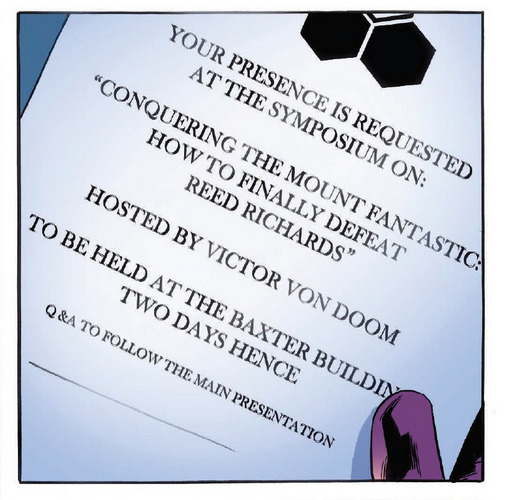
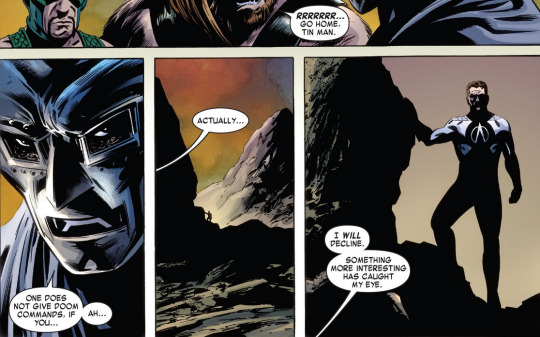
(I'm still making my way through it so that's what I have at the moment!)
#doomreed#doctor doom#reed richards#victor von doom#marvel comics#reading guide#hexposts#fantastic four#dr doom#mr fantastic#mister fantastic#marvel#meta tag#fic rec
109 notes
·
View notes
Photo
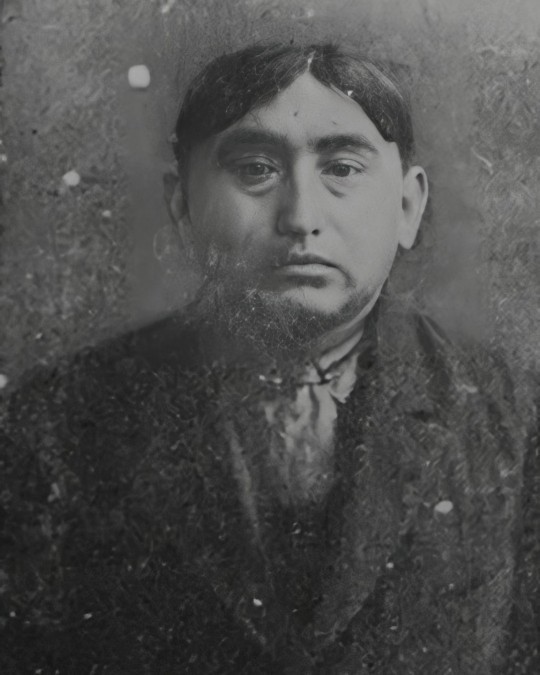
On this day, 5 June 1920, Peruvian anarchist Nicolás Gutarra was deported from Chile to Mollendo in Peru. He was expelled under the Residence Act of 1918 which was implemented to target anarchists and communists in the wake of the 1917 Russian revolution. He had been accused of "attacking the established order" and dissuading young workers from joining the army, partly at least for advocating for the defence of Julio Rebosio, another Peruvian anarchist and conscientious objector who had been sentenced to death by Chilean authorities. Gutarra had been a key organiser of a successful general strike in Peru which won the implementation of a maximum 8-hour working day in 1919. He was subsequently deported from Peru to Panama, from whence he was deported once again to Brazil. He travelled to Bolivia and Argentina, where it is believed he was also quickly expelled, before travelling to Santiago, Chile, to continue his agitation. After his deportation back to Peru, he was arrested again, in connection with attacks on missionary schools set up to convert Indigenous peoples and put them to work in the rubber industry. He was then expelled and sent to Brazil, eventually repatriated voluntarily to Venezuela, who deported him once more to Colombia. There he became a leading organiser amongst tenants in Barranquilla until he was deported to Panama following a general strike. After going off the radar for some years, he turned up in Guatemala in 1928, where he helped organise a revolutionary syndicalist group, the Committee for Union Action. From there he travelled to Costa Rica and eventually moved to New York City. In 1959 he and his family moved to Puerto Rico, where it appears he died in 1961, aged 68. Our work researching and promoting grassroots history like this is only possible thanks to support from you, our readers and listeners on Patreon. If you can, please consider supporting us and accessing exclusive content and benefits: https://patreon.com/workingclasshistory https://www.facebook.com/photo.php?fbid=638771428296076&set=a.602588028581083&type=3
166 notes
·
View notes
Text
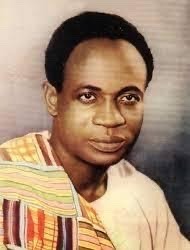
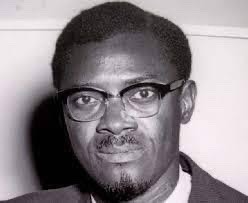
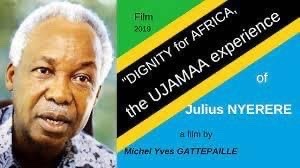
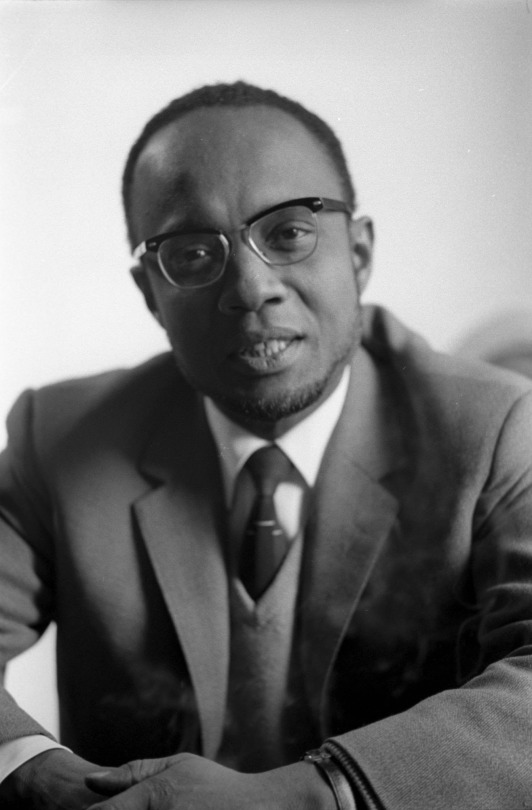



One day in the future, there will be a place named the United States of Africa Federation. It will be a vast territory comprised of many countries. The leaders will convene and decide to unite the region to make it stronger, thus creating a federation.
In the United States of Africa Federation, there will be one prominent leader known as the President. The President will be the leader who will make all the significant decisions. However, the President will not be a dictator. The President will be elected by all the people within the United States of Africa Federation.
They will also have a single currency for all the countries - no more kwachas, nairas, or rand - just one significant currency called the Afri-dollar, making trading and other activities easier. Additionally, they will have one massive army known as the African Defence Force to protect the entire federation from bad actors and keep everyone safe.
The United States of Africa Federation will not be perfect. There will be complex issues to address. The Federation will have to figure out how to share resources and help all the people in need.
Overall, people will work together to create a better future for Africa. They will make Africa strong and proud. It will be a place where everyone will be equal and will respect one another.
This concludes the story of the United States of Africa Federation, prophesied by African revolutionaries who have advocated for the unity of Africa:
1. Kwame Nkrumah (Ghana): Nkrumah was a key figure in the Pan-African movement and played a crucial role in Ghana's independence from British colonial rule. He strongly advocated for African unity and was instrumental in the formation of the Organization of African Unity (OAU), now known as the African Union (AU).
2. Patrice Lumumba (Democratic Republic of Congo): Lumumba was an influential leader in the struggle for Congo's independence from Belgium. He envisioned a united Africa free from colonialism and exploitation. Unfortunately, his leadership was cut short by his assassination in 1961.
3. Julius Nyerere (Tanzania): Nyerere was the first president of Tanzania and a prominent advocate for African unity. He believed in socialism and played a crucial role in the formation of the OAU. Nyerere actively supported liberation movements across Africa and worked towards economic and political integration.
4. Amílcar Cabral (Guinea-Bissau and Cape Verde): Cabral was a revolutionary leader and the founder of the African Party for the Independence of Guinea and Cape Verde (PAIGC). He fought against Portuguese colonial rule and championed the idea of a united Africa. Cabral's ideas on liberation and African unity continue to inspire many.
5. Thomas Sankara (Burkina Faso): Sankara, often referred to as "Africa's Che Guevara," was the president of Burkina Faso. He advocated for self-reliance, social justice, and pan-Africanism. Sankara pushed for economic independence and called for African countries to break free from the shackles of neocolonialism.
6. Samora Machel (Mozambique): Machel was the first president of an independent Mozambique. He was a staunch supporter of African liberation movements and a vocal advocate for African unity. Machel emphasized the importance of self-determination and worked towards regional integration in Southern Africa.
7. Jomo Kenyatta (Kenya): Kenyatta played a crucial role in Kenya's struggle for independence and became the country's first president. While focusing on building a strong and independent Kenya, he also emphasized the importance of African unity and cooperation.
#blacktumblr#black history#black liberation#african history#united states of africa federation#pan africanism
91 notes
·
View notes
Text
ftmtftm's reading (and watching) list
So I've been putting this list together to help people understand my beliefs and also to expand their own. This is a list of theorists, poets, authors, artists, and people that I often source from whose works have deeply impacted my framework of the world. I hope someone else can find them useful as well.
I've included several videos because I know how inaccessible academic text can be, but I do encourage you to read the text if you're able and seek out copies of books listed at your local libraries or independent book sellers/second hand book shops! When I could not find a PDF for a written work I have added Thrift Books links. Also double check the Internet Archive, Trans Reads, and The Anarchist Library for more readings!!
If any of these links break please let me know and I'll see what I can do to fix them. I'll be adding to this list as time goes on as currently these are just the books I can see on my bookshelf and videos I could remember I've seen before!
3.4.2024 - This list is slightly outdated in that there are several authors and works I need to add. Please seach the names James Baldwin and Audre Lorde or simply my reading list tag on my blog for additional resources.
Theory
Kimberlé Crenshaw:
Critial Race Theory: The Key Writings That Formed The Movement - thrift books
Mapping the Margins: Intersectionality, Identity Politics, and Violence against Women of Color - PDF
The Urgency of Intersectionality - video
Kimberlé Crenshaw Intersectionality is NOT identity - video exerpt from her WOW keynote speech
Angela Davis:
Angela Davis Criticizes "Mainstream Feminism" / Bourgeois Feminism - video
Angela Davis What it means to be a Revolutionary (1972 Interview) - video
Roxane Gay:
Bad Feminist: Essays - Internet Archive
Roxane Gay: Confessions of a bad feminist - video
Roxane Gay, Feminism and Difficult Women - video
bell hooks:
Feminism is for Everybody - PDF
The Will to Change - Internet Archive / audio book - YouTube
All About Love - PDF / audio book - YouTube
Teaching to Transgress PDF / audio book - YouTube
Speaking Freely: bell hooks - video
bell hooks & john a. powell: Belonging Through Connection (Othering & Belonging Conference 2015) - video
bell hooks & Gloria Steinem at Eugene Lang College - video (intro ends 7:24)
Emi Koyama:
The Transfeminist Manifesto - PDF
Ijeoma Oluo:
So You Want to Talk About Race - thrift books
Ijeoma Oluo Talks at Google - video
Public Presentation with Ijeoma Olua - video
History / Journals
P. Carl:
Becoming a Man - thrift books
Library Labyrinth Live Presents: P. Carl Becoming a Man - video (intro ends approx. 3:20)
P. Carl Prologue UCCS - video (audio quality poor)
Keith Haring:
Journals - PDF
Keith Haring Documentary - video
Keith Haring On The Fence - video
Jack Lowery:
It Was Vulgar & It Was Beautiful: How AIDS Activists Used Art to Fight a Pandemic - thrift books
Susan Stryker:
Transgender History - PDF
Transitions, with Susan Stryker - podcast - YouTube
Lou Sullivan:
We Both Laughed in Pleasure: The Selected Diaries of Lou Sullivan 1961-1991 - trans reads
Trans Oral History: Meeting Lou Sullivan - video
A series of video interviews with Lou - playlist
Fiction / Poetry
Chinua Achebe:
Things Fall Apart (novel) - PDF
I'm trying hard to not add too much of my own commentary to this post but personally I really think it's helpful to read Things Fall Apart in theoretical conversation with The Will to Change by bell hooks and in direct conversation with one of the works it was written in response to, The Heart of Darkness
Arundhati Roy:
The God of Small Things (novel) - thrift books
Arundhati Roy talks about her life and views on the world - video
Warsan Shire:
Bless the Daughter Raised by a Voice in Her Head (poetry collection) - thrift books
Warsan Shire reads her poetry - video
Zadie Smith:
White Teeth (novel) - Internet Archive
White Teeth (4 part Real Drama adaptation) - videos
Zadie Smith Interview: On Bad Girls, Good Guys and the Complicated Midlife - video
A Conversation with Zadie Smith - video
Pamela Sneed:
Funeral Diva (poetry and prose collection) - thrift books
Pamela Sneed Discusses "Funeral Diva" - video
I offer you a secret meme for your time (with books I still need to add to this list):

112 notes
·
View notes
Text
"The quote is from Les Damnes de la terre (Wretched of the Earth), and can only be understood in the context of the fuller argument Fanon is making: “Colonialism is not a thinking machine, nor a body endowed with reasoning faculties. It is violence in its natural state, and it will only yield when confronted with greater violence.”
No one can deny Fanon’s brilliance or his pioneering and profound understanding of the psychological effects of colonial violence on the colonised and the coloniser (as a psychiatrist, he treated French colonial officers and Algerians alike and found them to suffer similar psychiatric ailments). But the second and more famously quoted part of Fanon’s argument is not comprehensible without the first part, and the first part – especially in the Israeli context – is in fact profoundly wrong.
Colonialism, especially settler colonialism – and even more particularly Zionist settler colonialism – is very much a “thinking machine” with very powerful and longstanding logic and rationalities that are the key to its success. Because of this, considering what “a greater violence” would look like and how it can be measured, never mind achieved, is a crucial task for those analysing and fighting colonial violence alike.
I have yet to see any plausible scenarios in which Palestinians acquire the means to deploy “far greater violence” vis-a-vis Israel/the Zionist entity for any length of time in any conceivable geostrategic balance of power. Even if Iran (the only major power that supports Palestine in any meaningful way), for example, wanted to deliver heavier weapons to Palestinians, Israel’s control over access points, as well as Egypt’s and Jordan’s, will prevent that from happening. Palestine is not Ukraine, supported by major powers and able to utilise land, water and air corridors to obtain an unending stream of weapons deliveries to fight a much larger and better-armed adversary. Quite the opposite, in fact.
More broadly, Palestine today is not Algeria in 1956, which was Fanon’s most important reference point. Nor is Israel France, with a metropole to which settlers can return (unless we consider Tel Aviv the metropole). There will be no long-fought war of independence resulting in the vast majority of Jews leaving à la française a reconquered Palestine. But there are several scenarios that could lead to a redux of the Nakba, as many Israeli politicians are now screaming for.
[...]
Indeed, for over 50 years of occupation, and 30 years of the post-Oslo Palestinian “self-rule” rather than “the native cur[ing] himself of colonial neurosis … through force of arms”, what has occurred (as I learned in interviews with therapists at the few mental health centres in Gaza as far back in the later 1990s through 2000s) is the passing on of trauma, with former Fatah prisoners tortured by Israel torturing Hamas members using the same techniques as the Israelis used on them – often screaming at their victims in Hebrew while torturing them in the very same rooms where they were tortured. Hamas has continued this cycle in the two decades of effective control over Gaza. And now we see this with crowds cheering kidnapped, beaten, and murdered Israelis.
Whatever catharsis this constitutes, it is not one that will lead to victory over an Israeli society that has been using violence against Palestinians as its own traumatic catharsis for 75 years, in a world that has a very high tolerance for Palestinian civilian casualties, with most people in the West still supporting Israel whenever there is a high level of Israeli Jewish casualties.
[...]
Tragically, Fanon died in 1961, a year before Algeria achieved independence. He did not live to see the realities of postcolonial politics in Algeria, or across Africa for that matter, where, as Kenyan novelist and decolonial thinker Ngugi wa Thiong’o has so powerfully showed, leaders of newly independent states almost immediately began treating their peoples in much the same manner as their former colonisers (a phenomenon also experienced with the Palestinian Authority and Hamas since Oslo).
Forty years ago, when he was describing this dynamic of postcolonial governance in his groundbreaking prison memoir Wrestling with the Devil: A Prison Memoir, Thiong’o used the term “neocolonial” – not to indicate the continuation of European control by other means, but rather to describe how anticolonial leaders adopted (and adapted) the same brutal and authoritarian techniques of rule as their colonisers to cement and maintain their power; a critique of the “coloniality of power” that is today at the heart of the ever more popular decolonial thought.
That coloniality of power fundamentally will never allow for anything approaching actual independence for Palestinians, neither via the neocolonial PA nor with Hamas at the helm. If Palestinians are to defeat Zionist colonialism, it will likely take a much different sort of analysis of its violence and power than Fanon offered three-quarters of a century ago, and it will probably require a paradigm shift in the core concepts of what a nation, freedom and independence are at a moment when the entire world, not just Palestine/Israel, is heading towards conflagration.
read the full article
I really like this column. When western media is mindlessly parroting Israeli propaganda and western far-leftists (myself included) are primarily listing all the evils of the Israeli state to make it clear who the real bad guy of the story is, there's very little practical discussion of what is actually happening and what could come next.
93 notes
·
View notes
Text

Valise (AO3)
From my "Domestics" Ficlet Series
GEN Young Secondo (b. 1961) (1969)
(Illustration by Me...Yes, he is supposed to look like Damien from the Omen)
8 year old Secondo is a touring piano prodigy, and his mother supports him every step of the way. An unexpected visitor arrives at the Ministry HQ.
Tags: domestic fluff, Secondo the child prodigy, mother and son relationship, this is why he is so intense, Enjoy my Google Translate Italian, Maybe I should send this to my Therapist, Sorta Sad Fluff Because That's My Brand
First and foremost dedicated to @fishwithtitz once more for asking me about Secondo after reading my Kid Primo stuff.
Ficlet below the cut!
1969
She was always there. Sister Rebecca. His mother. Secondo stole a glance across the top of the piano to the velvety darkness of stage right. He could tell she was there by the soft gleam of her perfectly round glasses. Secondo gave a nod, then refocused himself on the piano keys before him.
This tour season she had planned for him a program highlighting the greats of Chopin’s work He had grown quite a bit since his debut at six, and so he was able to reach more keys with greater accuracy. The theater was packed, the audience on the edge of their seats astounded at how such a young mind could comprehend the complexities of piano performance. He was on tempo and accurate—but then again any trained monkey could be that with enough practice. They were drawn to his surprising sensitivity on the keys, his understanding of drama and atmosphere that went way beyond his years.
Secondo didn't care whether he played in the common room of the Ministry or a packed orpheum in New York City, in both places his brain worked the same. His fingers moved and the sound fell out, a puzzle to massage his brooding mind. They were the soundtrack of the visions he had in his imagination brought on by all the paperbacks he read in the Ministry limousine as he toured up and down New England.
A leviathan of cosmic horror, its impossibly great head rising from the sea.
Moriarty and Sherlock, entangled as they plunged headfirst down the falls.
A corpse’s heart, beating under the floor in defiance of its murderer.
Rough beasts, their hour come at last, slouching towards Bethlehem.
He finished the piece with a flourish, bowing solemnly. His mother was always the first one to applaud.
When they traveled, which was often, she insisted they stay at the finest rooms in the finest hotels. Her businesslike, steely expression was usually enough to ensure their stay there was one of ease and opulence, and she tipped everyone handsomely besides. “Yes, and the room needs to have a phone. It is essential.”
“There is a time to perform and a time to rest,” she told her son once. “Commit to each season fully.”
Except it seemed like she never truly rested. The Personal Assistant to Mother Imperator rarely does. They would have a meal in the hotel suite, or go to a play or opera performance in each city they visited, but she was always peering into her datebook or calling the Ministry in the theater phonebooth during intermissions. Secondo would hold her drink while she made plans and kept appointments across the world.
Back at the hotel, the calls and note taking would continue, this time on the elegant historical phone of the penthouse, at least until she felt everything was laid out well enough before going to bed.
“No, it's not possible, but you have to make it work.” Click. Her datebook would snap open, and she'd dial the rotary phone again for another check in. Whirrrr, whirrr, whirrr.
“Nihil will be on tour the fifteenth through the second. Yes, the venues are all approved.” Click. Snap. Whirrr, whirr, whirrr.
Then she would pull out an array of languages. A full half hour conversation in Italian. Three requests in Portuguese, a demand in Spanish from another caller across the world. A stilted yet firm discussion in broken German (she struggled with that one, but it was on her list).
Secondo, still warm from his bath, would close his eyes in the other bed. There was the soft murmuring of phone call after phone call. The efficient scratching of a fountain pen. The impatient tapping of her fingernails across the desk. She would turn to check on him and through his eyelashes he saw once more the gleam of her spectacles, the white gold glitter of the smart brooch at her throat. He started to drift off to sleep to the quiet efficient sounds of his mother at work.
“Yes, I'm away now. Our tour is going well. My son and I are having a lovely time. Yes, he is doing so well. Talented through and through.”
***
“And what brooch shall I wear today, boy?” She would ask him each day, after putting up her hair and putting away her ivory combs. Secondo would peer across the open jewelry case, the finery enclosed and separated with black velvet dividers, a stable of jewels. He would pick one and hand it to her. She never refused his selection.
“How is my watch today, boy?” Would be the next thing she would ask about. Secondo would already be prepared with it. It was a thin ladies wristwatch over forty years old and still pristine. It was a big moment for him when he was allowed to take care of it. He would make sure it was wound each day, opening the back to see the small gears whirring smoothly like the action of a song bird's heart. He would polish the white gold surface, check the fittings on the square cut sapphires. Under his care he wanted it to run for another four hundred years.
“We are going back home today,” she said. “The tour is over. The car is picking us up at the front in an hour. Is everything accounted for, boy?”
Secondo inspected the entire jewelry case, making sure all was there. He even considered the secret panel underneath, where a few hundred dollar bills were stored. He nodded solemnly, the most dutiful little butler she'd ever employed.
Secondo was the only one allowed to carry her travel case of jewelry. It was a small valise of ostrich leather with engraved brass to protect the corners. He was the only other one who knew the combination. When they traveled he never let his hand leave the handle. He had once seen a spy movie where a man had a handcuff and chain attached to a secret spy suitcase, and that really stirred his imagination.
I'm going to protect these, Secondo would think, and the idea of fighting off bandits and thieves with his teeth and fists would send a thrill through his little body. I'm going to defend these with my life.
***
Secondo stared out the window of the Ministry limousine, watching the ascent of the car into the canopy of old growth as they returned home. When there was nothing to say he and his mother Rebecca chose to say nothing. They sat in a silence that was comfortable to them, the soft scratching of her pen in her little datebook lulling him into calm.
Rebecca closed the book with a business-like click, elegantly stowing it in her coat breast pocket. Secondo watched the little flash of red shagreen vanish into the black wool.
“Boy.” Rebecca’s face showed nothing. She peered at him with a corvid intensity, then leaned forward, her strong nose mere inches from his face. An eyebrow twitched exactly once. “What do we have here?”
Second stared back with an equal level of stoicism, although there was the slight fluttering of anticipation behind his ribs. His mother reached out by the side of his head, feigning dramatic surprise. “Look!” She hissed. A wrapped caramel miraculously appeared from his ear, and she solemnly placed it in his hands. “Don't I tell you to wash your ears, boy?” She teased.
At that, Secondo smiled broadly, unwrapping and savoring the treat. Rebecca gave her son's knee a single pat. “Excellent work once again, my Secondo. I would not expect anything less.”
“Will we go again next year?” He asked.
“If you want,” she said.
“Europe?”
Rebecca frowned. “Not until you're older. These little tours are too much as it is on you. I know you enjoy the spotlight, boy, but you do have the rest of your life to stand under it.”
Secondo tightened his grip on the handle of her jewelry valise, glowering at the ridges of the leather seat across from him. “Why can't I be old enough right now?”
“Secondo—” and he snapped bolt upright, looking into her eyes. She used his name mostly when he was in trouble. She pulled off her glasses and began to clean them with a cloth from her jacket. The thick glasses concealed the tired wrinkles under her blue eyes. “Great men are good boys first. If you're going to be Papa Emeritus, you need to start now. And you are on the path. One step at a time.”
“But Nihil…” Secondo found it hard to understand how his proper mother ever spent a moment enjoying the presence of his freewheeling bohemian father. He suspected Rebecca felt the same.
Rebecca replaced her glasses. “I said that you are going to be a great man, Secondo.”
As the limo pulled into the circular driveway Secondo noticed two figures and some luggage standing under the front portico. Rebecca looked unusually puzzled as she helped her son out of the vehicle. One of the figures was a tall man in a very opulent fur-lined cape. He had the headwear and glittering grucifix that announced his station as a Cardinal, although he was not anyone Secondo had ever seen before. The second figure was much smaller and shyly stood behind the visitor. He was so small and hidden that Secondo assumed he was some sort of pet.
“Sister Rebecca, buon Giorno.” The Cardinal’s voice was merry, sing-songy. Foreign. “They had said you are one I will be needing a seeing, yes?” He bowed his great graying head. “I am Cardinal Raphael, sono di Milano.”
“Parlo fluentemente l'italiano, Excellenze,” said Rebecca. “How can I help you.”
Raphael’s shoulders lowered in a moment of relief. “Dov'è il Papa Emeritus questo pomeriggio? Sono qui per Sua Eccellenza.”
“è fuori. in questo momento è a San Francisco.”
“Ah, si, si…”
The two adults chattered on the step. Secondo held his mother’s hand as he observed the other visitor beside the Italian, who was slowly inching into view.
Holding onto the Cardinal’s belt end was a very small figure, bundled up. Above the mountain of his knit scarf and below the too-big beret, little cat-like eyes sparkled. It was a boy about half Secondo’s age, or younger. He had a cardboard suitcase on which a child drew a cartoon flower.
“Shall we go inside?” Rebecca finished the conversation. “You did not come all this way to stand on these steps. Come.”
A few moments later and Rebecca offered the visitors a seat at the sofa of a receiving room. She smiled as the adults settled in. Secondo took a seat in a nearby armchair, still holding the precious valise in his hand. The new boy struggled a bit with getting up onto the couch but sat there obediently, swinging his legs.
“Now,” Rebecca said, done with the pleasantries. “Why have you come all this way today, Cardinal.”
Cardinal Raphael swept out his hand. “Questo è il figlio di Papa Emeritus.” The little boy beside the cardinal blinked his eyes wide, checking in with his mentor. The Cardinal raised his bushy eyebrows, gesturing slightly with his hands. The boy screwed up his face in an attempt at nobility and bobbed his head slightly in a bow.
Rebecca’s mouth was now a thin line. “Oh? Is that so?”
“The em…his Eminence’s tour of Italy was er…in the 1964 and the 1965.”
“It most certainly was,” replied Rebecca. Her hand imperceptibly clenched the edge of her sofa chair. “I planned every last detail.”
“Perhaps not,” replied the Cardinal with a good natured chuckle, but upon seeing Rebecca’s icy expression he swallowed his own. Time crawled as she stared into him, tapping her fingers on her chair. If a sinkhole ripped open beneath the Cardinal's feet dropping him into the depths of the planet, he would thank Satan for the opportunity.
Rebecca solemnly pulled off her glasses and rested them on the side table. She arranged the datebook and fountain pen beside them, and rose to her feet. “Cardinale, mi scuso.”
She backed away elegantly, opening the parlor doors behind her and slipping inside. The Cardinal seemed to be a decently friendly man, since he attempted to break the tense silence by leaning over to address Secondo. “So eh, you….baseball?”
There was a shattering sound against a wall in the parlor. It sounded like a plate falling to pieces. Afterwards there came a great toppling noise of wood on wood, a pop and crack of carpentry destroyed under a foot. Then a wrathful scream was drowned out by the rushing, creaking crash of something large sliding to the floor. The tinkling of glass and a ceramic explosion suggested the victim to be an entire hutch of dinnerware.
The plates on the floor settled and Rebecca once more emerged, softly closing the door behind her and returning to her seat. Her face was as calm as it always was. She brought her items into her hands, writing something quickly in her book, then replacing in her jacket. “Secondo, I'm not sure if I want to buy your father a suitcase or a coffin.”
Cardinal Raphael shook his head and chuckled, but immediately recoiled once more at the glare thrown at him across the room.
The conversation became low, almost silent, the Cardinal gesturing with his hands as if he were a fencing opponent. He pulled out a crumpled piece of paper and handed it to Rebecca, who snatched it from his hands and glared at the words.
Secondo observed the little boy who was smiling to himself and admiring the carved wood paneling in the opulent receiving room. The boy noticed Secondo and presented him with a friendly mischievous grin.
Secondo frowned suspiciously back. He pulled the jewelry valise even closer to his chest.
The hushed conversation continued around them. Secondo had no idea what they were saying, but he attempted to understand the small snippets he heard.
Ci siamo presi cura di loro... quattro anni... torre della cattedrale... suicidio... è solo…
“Fine,” Rebecca said, neatly folding the note. She glanced over to Secondo, then back to her guests. She pointed at the new boy. “Stai qui per favore.”
The cardinal patted his young ward to his feet.
Rebecca leaned forward, staring into the little boy standing in front of her. Light reflected across her perfectly round spectacles, concealing her eyes and transforming her into some sort of suspicious owl, an inhuman statue. “Sei un bravo maschietto? Sei un maschietto obbediente?”
The boy winced, perhaps confused by the question. He collected himself and nodded.
“Lavorerai?”
Again he flashed a small face of concern. But he gave her one last determined nod.
“Very well,” Rebecca sighed. She leaned back in the chair and removed her glasses. There were a few beats of silence, the nun gathering her thoughts and tidying her mind from the previous moment’s sudden earthquake. She gestured from her son to the little visitor. “Secondo, this…I suppose then that this is Terzo,” she said. “Your…half-brother.”
My AO3 | Tumblr Fic List | My Obsessive Ghost AU Series aka My Flavor of Insanity
Please comment and reblog! Thank you.
46 notes
·
View notes
Note
can you reccomend any relatively low-stress fics (if such a thing even exists in tomione lol)
Hey Anon:
Low-stress could go a couple of ways, some of these might border on fluff. But these below are generally low key . Hope you enjoy them! - Haus
Youth in Retrospect by provocative_envy
E | One-Shot | 8k
She’s buying a box of condoms when she meets him.
“Those are shit, you know,” he says, jerking his chin at the pale purple box in her hand. “Can’t feel anything.”
She stares at him for a moment too long. The bell above the door jingles merrily as a rowdy group of schoolboys enters the store.
“Excuse you,” she replies, cheeks turning pink.
(you'll find a lot of flirty and fun fics in a similar vein by clicking on the author's name)
A Naughty Niffler by bunnystealsyourcarrots
E | One-Shot | 2k
Hermione finds herself sucked into an unknown world with an old familiar face
Handling a Dark Lord Wannabe by cleighc
E | WIP | 89k
Hermione was not amused. Not. At. All. They had defeated Lord Voldemort after years of struggle. Witnessed the end. She had thought, with relief and without an ounce of charity, that she never had to deal with that pretentious, presumptuous, melodramatic, homicidal son of a bitch ever again. Apparently the castle had other ideas.
Avada Kedavra Anonymous by Speechwriter
T | Complete | 8k
No one missed Riddle's pale fist tightening around the useless wand in his lap. "I am Tom," he ground out. "I am here for the sole reason that the alternative was community service." / Hermione moderates a post-Avada Kedavra support group. Chaos ensues.
You Should Know by Phantomato
E | Complete | 74k
Hermione, born in 1934 and Minerva McGonagall’s best friend, meets Tom Riddle, the boy whose scores were always just better than hers, at a wedding in the summer of 1961. She’s comfortable with what she wants from him, but he’s about to enter the next stage of his plan to take over the Wizarding world and test the limits of her acceptance.
AU where Hermione and Tom are contemporaries, but meet as adults during his rise to power. Older characters, not a darkfic, HEA.
#Tomione#answered asks#tomione finds#time travel#tom: good#Fluff & Angst#Happy Ending#Comedy#hermione: time travel
24 notes
·
View notes
Text

“New York glitter-punk outfit The Voluptuous Horror of Karen Black began life as a near-death experience. Shortly before forming the band in 1990, front woman Kembra Pfahler was strangled in a brutal mugging and almost died. While recovering, battered and zonked on painkillers, she watched the 1975 horror movie Trilogy of Terror on television. The film stars Karen Black, the quirky cross-eyed actress whose wildly erratic career encompasses everything from some of the key American films of the 1970s (Easy Rider, Five Easy Pieces, Nashville, Day of the Locust) to mainstream Hollywood schmaltz (Airport 1975) to obscure straight-to-VHS exploitation / horror dreck. In Trilogy's best-known segment, Black is stalked by and eventually possessed by a cursed malevolent Zuni fetish doll which has come to life. [SPOILER ALERT] It concludes with a final jolting image of the now-crazed and murderous, knife-wielding Black grinning blank-eyed and maniacal to the camera to reveal a mouthful of razor-sharp teeth identical to the Zuni doll’s … In her traumatized state, that savage and disturbing image -- combined with almost dying -- made a powerful impression on Pfahler. Inspired, she would blacken out her teeth, conceal her natural fine-featured beauty under cadaverous make-up and take to the stage clad in little more than a pair of thigh boots and a coat of body paint. Pfahler’s look can suggest a character from a John Waters film given an “ugly make-over”: think of Divine as the acid-scarred Dawn Davenport in Female Trouble (1974), an image which seems to anticipate TVHKB’s twisted glamour. Like Divine before her, Pfahler shaves off her eyebrows and shaves back her hairline to accommodate her extreme eye make-up. “I want to be both very beautiful and very repulsive,” Pfahler would explain to The Toronto Star in 1994.”
/ From my own blog post “The Voluptuous Horror of Karen Black at Meltdown Festival 10 August 2012” /
Born on this day 62 years ago (4 August 1961): California girl-turned-NYC provocative performance artist, Cinema of Transgression actress and Voluptuous Horror of Karen Black voodoo-dolly singer Kembra Pfahler. Photo of Pfahler by me!
#voluptuous horror of karen black#lobotomy room#kembra pfahler#performance artist#punk#glitter punk#performance art#new york punk#trilogy of terror#karen black
56 notes
·
View notes
Text



Subaru Sambar Try TS Sunroof SunSun-Window 4WD, 1987. The Sambar is Subaru's longest running model, having been first introduced in 1961 and now in its 8th generation. It was Japan's first truck compliant with the country's strict Keitora or Kei vehicle tax class. The 4th generation model introduced the "Try" as a designation for the van model which was also available with the high-roof and 4 wheel drive for the first time on the Sambar
#Subaru#Subaru Sambar#Subaru Sambar Try#Subaru Sambar Try TS Sunroof SunSun-Window 4WD#high roof#kei van#1987#4wd#4x4#micro van#1980s#sliding doors
316 notes
·
View notes
Text
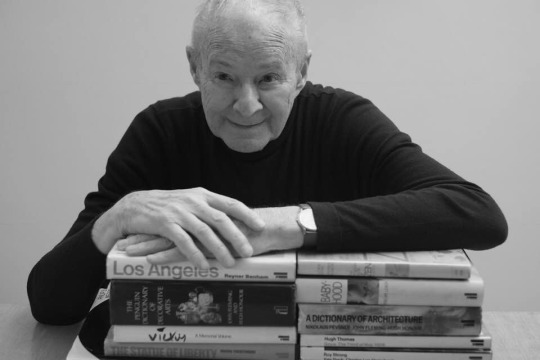
Gerald Cinamon
Chief designer for Penguin Books with a flair for pacing illustrated nonfiction, such as with Pelican’s Style and Civilization series
Gerald Cinamon, who has died aged 93, was one of the most skilled book designers of his generation. For 20 years from 1965 he was Penguin Books’ main designer of arts and architecture titles, becoming its chief designer in the mid-1970s.
A master of the paste-up method of layout, Cinamon was particularly adept at pacing illustrated books. From one spread to the next he would shift visual emphasis from vertical to horizontal, wide-angle to close-up, empty to full, synchronising these switches of treatment with key points in the text.
His debut for Penguin in 1961 coincided with two key events for the company: its acquittal in the Lady Chatterley’s Lover trial, and its employment of Germano Facetti, who recharged its cover designs for a new decade. But it was Kaye Webb, new editor at the Puffin imprint, who instigated the body of work for which Cinamon would become best known.
Webb had compiled a volume of her husband Ronald Searle’s St Trinian’s cartoons, and handed Cinamon, then a freelancer, “a box of jumbled clippings” from which to create a Penguin edition. He would paste up layouts at his kitchen table in Notting Hill, west London, surrounded by manuscripts, proofs and the aroma of Cow Gum, downing tools when his daughters returned from school.
The St Trinian’s Story (1961) led to further commissions for illustrated Penguins, and Cinamon unintentionally became a specialist in this field, at a time when letterpress was rapidly being replaced by offset litho as the means of printing books.
Where type and images had previously occupied two discrete planes – pictures on their own pages, often on coated art paper – litho enabled designers to place picture and text side-by-side, and Cinamon took advantage of this, interweaving halftones and line images with set type to make a verbal–visual narrative. His flair for sequencing nonfiction books led him to become the main designer of Pelican series of the 60s and 70s such as Style and Civilization and The Architect and Society.
The integrated method was also crucial to John Berger’s Success and Failure of Picasso (1965). There the author indicated precise points within the text where images were to be placed. When Cinamon inevitably found that this was not always possible, Penguin dispatched him to Geneva to resolve the layout with Berger.
In 1966 Penguin launched a hardback imprint, for which Cinamon designed A Fortunate Man: The Story of a Country Doctor, written by Berger and with photographs by Jean Mohr. The contrast between these two books for Berger demonstrates the span of Cinamon’s repertoire, despite the contextual similarities (same author, same publisher, single-colour print, a hand-held format).
Where Success and Failure’s layout rolled line by line with Berger’s polemic, A Fortunate Man’s images did not correlate with points in the text, and this allowed Cinamon to “write” the text–photo combinations, and the overall rhythm, in his own way. His arrangement is particularly effective in contrasting man with his rural environment: 45 pages pass before a human figure appears in the photographs.
Though sometimes categorised as a proponent of the objective, modernist Swiss style of graphic design, Cinamon’s solutions to briefs were far broader than that tag implies. His colleague Tony Kitzinger remembers his outlook as being “Swiss, tempered by New England”.
Born in Boston, Massachusetts, Jerry was the younger son of Pearl (nee Hirschberg) and Max, a liquor salesman. He initially studied at Massachusetts School of Art, and in 1953 joined the US Navy. He was then accepted by the department of graphic arts at Yale University, where his teachers included Alvin Eisenman, Armin Hofmann, Norman Ives, Josef Albers, Herbert Matter and Paul Rand.
Graduating in 1957, Cinamon received a Fulbright scholarship for the Ecole des Arts et Métiers in Paris, but found the approach there outmoded, so drove to Switzerland to study further with Hofmann in Basel. He was thus influenced first-hand by several key strands of the modern movement, from the Bauhaus to the new American advertising.
On the way home from Europe he met Diana Philcox, a recent textiles graduate from the Central School of Arts and Crafts in London. In New York Cinamon freelanced for publishers, and took up a one-year contract at Standard Oil of New Jersey (subsequently Exxon). In 1959 he and Philcox married, and in the following year moved with their twin baby daughters to Britain. Cinamon’s first clients in London included New Left Books and the Jewish-interest publisher Soncino.
After more than 20 years with Penguin, he left in 1985 to form a partnership with Kitzinger, who said of his former partner: “When I think of Jerry I do not see the kind of designer who shuffles little bits of paper around on a sheet. He would know, in advance, what he was realising.”
In 1987 Cinamon guest-edited a special issue of the trade journal Monotype Recorder in memory of Hans Schmoller, the exacting production director at Penguin (1949-76), who had been a “father figure” to him. He also wrote on the work of artist-designers including Talwin Morris, Ben Shahn and Emil Rudolf Weiß.
His biography of the type designer Rudolf Koch (2000), includes an apparently stray anecdote about a “young Berliner” who in 1933 had applied to become one of Koch’s students but had been turned away. The young Berliner was Schmoller.
Cinamon’s third daughter, Hannah, died in 2023. He is survived by Diana, their daughters Sara, Kate and Beth, eight grandchildren and a great-granddaughter.
🔔 Gerald Earl Cinamon, graphic designer and author, born 27 July 1930; died 15 February 2024
Daily inspiration. Discover more photos at Just for Books…?
12 notes
·
View notes